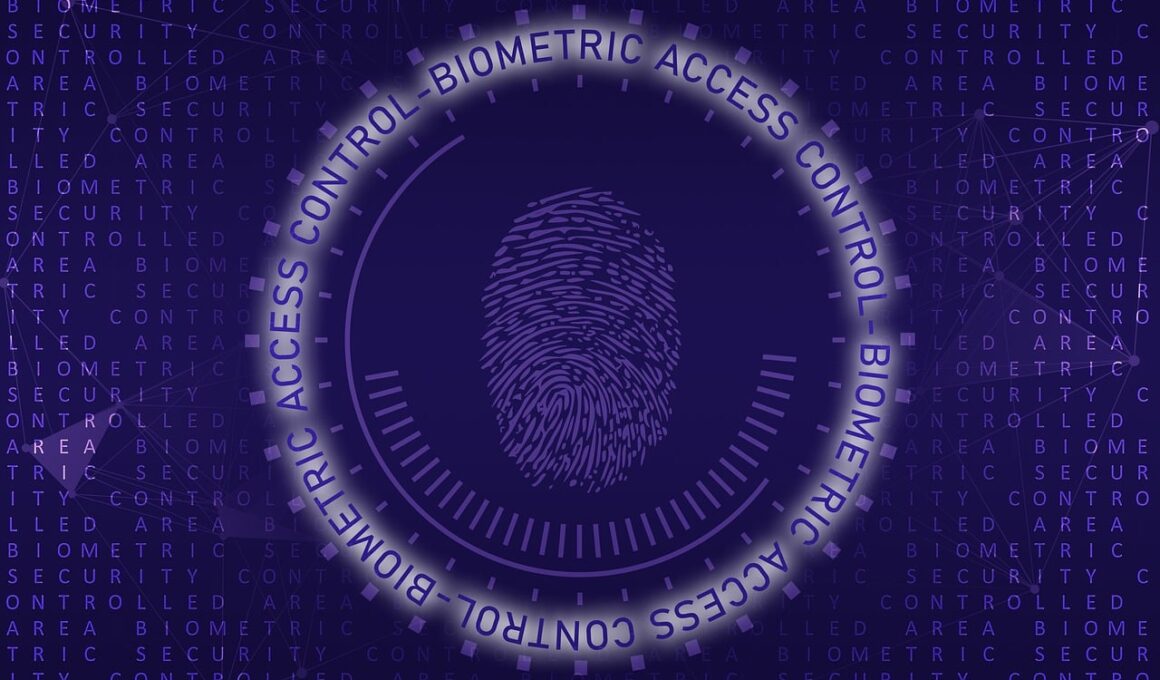Blockchain and Biometrics: Enhancing Identity Security
In an increasingly digital world, maintaining security and privacy for identity management is essential. Traditional systems often rely on passwords, which can be vulnerable to phishing and hacking attempts. By integrating blockchain technology, identity management systems can dramatically enhance their security. Blockchain provides a decentralized ledger that keeps identity data safe from unauthorized access. With biometric data, such as fingerprints or facial recognition, identity verification becomes much stronger. The combination of these two technologies ensures that individuals have control over their identity, reducing fraud risk. This approach minimizes the chances of identity theft while also allowing for seamless user experiences. Organizations can verify customers’ identities quickly while maintaining high standards of privacy. Moreover, each transaction can be securely recorded on a blockchain, adding a layer of accountability. This technology paradigm shift towards more secure identity management enhances user confidence and provides transparent access control methods. Depending on implementations, institutions can choose to store biometric hashes rather than raw data, thus further safeguarding user privacy and minimizing risks. Ultimately, the fusion of blockchain and biometrics could redefine how we approach identity management across industries.
Challenges in Current Identity Management Systems
Presently, many identity management systems face significant challenges. Centralized databases are prime targets for cybercriminals, posing a considerable risk to sensitive data. Unauthorized access to these databases can lead to data breaches, affecting millions. In addition, the reliance on password systems increases vulnerability as users often reuse passwords across multiple platforms. This behavior can easily result in credentials being compromised, leading to identity theft. User trust in the system diminishes with every breach reported. Furthermore, the bureaucratic nature of traditional identity verification processes results in lengthy wait times, frustrating users. Many individuals face challenges accessing essential services due to inadequate identification. In this context, blockchain’s decentralized nature can address these problems. It offers a more secure alternative for storing and managing identities. By reducing reliance on single repositories, organizations can enhance the resilience of identity management systems. Additionally, blockchain can streamline verification processes, allowing for more efficient and timely access to services. However, the implementation of blockchain isn’t without challenges, including costs, regulatory hurdles, and user education. Overcoming these obstacles is crucial to unlocking blockchain’s full potential for identity management.
As organizations seek reliable methods for identity verification, biometrics has emerged as a key player. Fingerprints, iris scans, and voice recognition are some examples of biometric identifiers that enhance security measures. Biometrics offer unique advantages over traditional identification methods. They provide a higher level of accuracy and reduce the possibility of impersonation. However, concerns regarding the storage and management of biometric data must also be addressed. The fusion of blockchain and biometrics presents an attractive solution for these concerns. Storing biometric data on a blockchain would help maintain its integrity while enabling individuals to retain control over their data. For instance, hashing biometric data provides a way to secure sensitive information. This method ensures that raw biometric data is not directly accessible. Consequently, even if blockchain data is compromised, the actual biometric information remains secure. Organizations can perform authentication by checking the hashed values without accessing personal data. This enhances user trust in the system. Furthermore, regular audits and transparency can be ensured through smart contracts on blockchains. This feature can help instill user confidence in how identity data is managed and utilized across various applications.
The Role of Smart Contracts in Identity Verification
Smart contracts are self-executing agreements with the terms explicitly written into code on the blockchain. They are a pivotal feature that can automate and streamline identity verification processes. By leveraging smart contracts, organizations can minimize the complexities associated with policy compliance and regulatory requirements. For instance, these contracts can automatically validate user identity against blockchain-stored information, effectively reducing human error. Furthermore, the transparency of smart contracts ensures that all parties can verify each step without compromising sensitive information. This enhances accountability while expediting the verification process. Smart contracts can facilitate real-time updates, ensuring that identity information remains current and accurate. This feature helps in combating issues with outdated or fraudulent identity records in traditional systems. In addition, automating these processes can lead to cost savings and increased efficiency for organizations. As businesses seek to implement innovative solutions, the integration of smart contracts for identity verification can be integral. However, adequate security measures must remain in place to protect the underlying blockchain systems from potential vulnerabilities. While challenges exist, the advantages are clear, making smart contracts a vital innovation in enhancing identity security.
Regulatory compliance is essential in implementing identity management solutions. The use of blockchain and biometrics introduces exciting opportunities but also raises legal and ethical questions. Data privacy laws vary significantly across jurisdictions, impacting how organizations process sensitive identity information. As a result, it is critical for companies to stay updated on global regulatory frameworks addressing biometric data usage. Working with legal experts can help ensure that identity management solutions align with applicable regulations. Additionally, user consent is paramount when leveraging biometric data for identity verification. Organizations must adopt transparent practices, informing users about how their data will be used, and ensuring they have consent before processing their information. Failure to comply with regulations can lead to severe penalties and loss of public trust. Furthermore, organizations must also plan for potential misuse of biometric data. Encryption techniques and strong access controls should be employed to address this challenge adequately. The legal landscape continues evolving, especially around the use of emerging technologies like blockchain. Companies must navigate this landscape carefully to ensure that their identity management systems are not only efficient but also compliant and ethical.
Future Prospects of Blockchain and Biometrics
The future of identity management suggests a high potential for blockchain and biometrics to revolutionize how individuals access services and prove their identity. Increasing digitalization calls for more robust and innovative methods to enhance security and privacy. The integration of biometric authentication systems in everyday applications is likely to grow, affecting various industries, including finance, healthcare, and travel. Organizations that embrace these technologies can offer enhanced user experiences while ensuring robust security. Potential advancements in biometric technologies, such as improved recognition accuracy, are expected to drive further adoption of these systems. As blockchain technology continues to mature, the interoperability between different platforms will become crucial. Establishing industry standards can facilitate collaboration and ensure a smoother integration process. Additionally, artificial intelligence may play a supporting role, optimizing the use of biometrics. This combination could lead to even more accurate identity verification solutions. Ultimately, the fusion of blockchain and biometrics can create a seamless user experience while maintaining data security. The increasing relevance of these technologies emphasizes the vital role they will play in shaping the identity management landscape for the future.
As organizations increasingly turn to blockchain and biometric technologies for identity management, education and awareness remain crucial. Stakeholders, users, and developers must understand the benefits and challenges associated with these solutions. Educational initiatives can help dispel misconceptions surrounding data privacy and provide insight into best practices for safeguarding biometric data. Furthermore, collaborations between organizations can foster innovation while ensuring that the technologies adopted are trustworthy and secure. As the landscape evolves, continuous learning and adaptation will be necessary to keep pace with emerging threats. As a result, creating forums for discussion and sharing knowledge will be essential. Technology developers must also consider the user experience throughout the design process to cultivate broad adoption. By prioritizing user needs and understanding their concerns, organizations can build systems that facilitate trust and acceptance of these technologies. Consumer feedback plays a vital role in improving existing solutions and driving their evolution. The combination of blockchain and biometrics offers a transformative approach to identity management, enabling organizations to better secure their information while enhancing user experiences. Engaging with the community will promote a more sustainable and trustworthy future for identity security.


